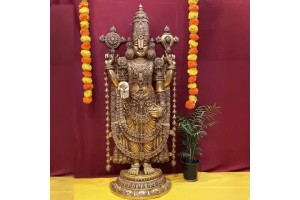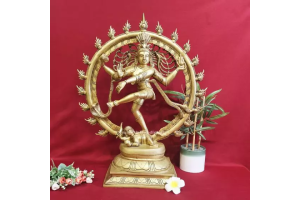
ALL ABOUT PALLANGULI
Pallanguli or pallanguzhi, is an indoor board game. Most of the Southern people must have known this or atleast heard about this through movies and songs. Pallanguzhi has many names as it has as in Tamil language. ‘Alaguli Mane' in Kannada, ‘Vamana Guntalu' in Telugu, and ‘Kuzhipara' in Malayalam.
It is an ancient “Mancala” game which means that it is a two-player turn-based strategy game, played using small seeds. In ancient Tamil, the word ‘Pallanguzhi' has an interesting meaning which says, “pal” as ‘many’ and “kuzhi” as ‘pits. It is a game board which has ‘many pits. It is mostly played in the Southern part of India especially in Tamilnadu and Kerala.

THE ORIGIN OF PALLANGUZHI
Pallanguzhi game was initially originated during the period is Cholas’dynasty i.e. in India. It was played by the people on the premises of the Chola temple to spend time which became popular among Tamil people.
It is believed that it had been originated from India where the game is played all over the country. Indians spread this game wherever they went for trading around the world. Even the words used in this game while playing were of Tamil or maybe Sanskrit origin.
It has also been mentioned in some of the Copper Plate Inscription found in period of Pallava king Simhavarman at his Pallankovil. It says that during that period, a land was donated to a teacher who was a Jain named Vajranandhi. In that land there were four borders in which one of the borders has named as ‘Pallanguzhi' which means garden with many pits.
Pallanguzhi is played by two players. The board has 14 pits of two rows. The board is mostly in wooden, brass or stone. The seeds used in this were mostly “cowry shells” (which is called as 'sozhi' in Tamil) tamarind seeds, or small pebbles as counters. The skills required in this pallanguzhi game is mainly of ‘quick maths’.

Objective of the game
The main and foremost objective of pallanguli is to collect more pebbles than the opponent.
Description of the game
The game board has 14 pits, where each player owns 7 pits. Small pebbles or seeds are used as counters. Three types of games played using pallanguzhi are: -
(a) Kattam
(b) 6 seeds game
(c) 12 seeds game
HOW TO PLAY PALLANGUZHI
The stones or pebbles are put on the both sides of the board. The player who plays their turn first, picks the seeds from any of their respective pits. They usually starts from the right side to the left side in the anticlockwise. While moving around the player drops the seeds in the pits of both the sides simultaneously.
Once the picked seeds are over the player can take the seeds from the next pit right after where they stops and vice-versa. If the player finds no seeds in the following pit next to the last seed dropped, the player captures the pits after an empty cup.
If the player finds two empty pits after the last seed dropped will capture no seeds and their turn is over. The opponent will take over the game thereafter.
The winner of the game will be identified by the storage of high number of seeds than the other player.

POPULARITY OF PALLANGUZHI AMONG PEOPLE
Pallanguzhi is a popular game among kids and old people. Among kids, Pallanguzhi game encourages friendship, helps to learn numbers and to count, to improve eye-hand coordination of little children, and also improves the concentration of the young minds. It also helps learn children how to be strategical in an engaging way.
Among old-age people, pallanguzhi helps them to spend time with young people and also teaches them to play the game more interesting with an expertised manner.
In Tamilnadu, even in recent times, Pallanguzhi is played by the girls who attained their puberty not to make them feel bored and alone. They usually sing songs whilst playing Pallanguzhi.

Reminding us of our ancestors from the roots
Pallanguzhi as a traditional game are often interconnected to the culture and language of its land of origin. The mindset or actions which to-the-best facilitate winning in the form of behavior.
It is also a game which is indirectly inculcate the heritage and cultural values.
Developing skills like interpersonal and social skills
The group play readily encourage people interaction so that the Pallanguzhi. It vastly provides child development as it teaches kids to work as a team and achieve group wins via teamwork.
Finger nerves have something to do with pallanguzhi
Pallanguzhi helps the never-endings to the circulation of blood by the usage of tiny seeds to be put into the pits which needs nimble finger movements.
So make optimal use of our own traditional games like PALLANGUZHI of your playtime. It may also helps you to cover up golden virtues like patience and sharing.
Buy Wooden pallanguzhi online https://www.magizhcopper.com/wooden-foldable-pallanguli-chozhi-cowry.html





